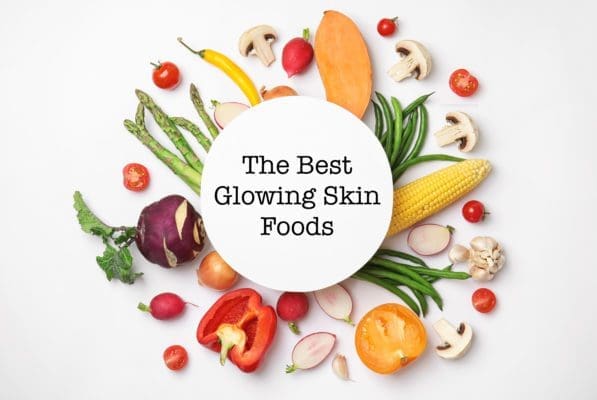This Glowing Skin Foods guide includes healthy skin foods to add to your diet for more luminous skin.
Plus healthy skin diet meal plan with 30 recipes to choose from.


The best skin foods for glowing skin are included below, along with medical research to prove how great they are for your skin
This food for glowing skin is easy to work into your diet… many glowing skin foods (like carrots, strawberries, and oranges) can be added right away as healthy snacks.
This article for Healthy Glowing Skin Foods includes a healthy skin diet plan and recipes!
Glowing Skin Foods
We all want healthy, glowing skin, but sometimes it seems like a difficult task to achieve.
There are many foods that can help improve the health and appearance of our skin, however.
In this article, we will explore some of the best foods for achieving healthy, glowing skin.
Some of these foods include…
Carrots:
Carrots are rich in beta-carotene, which is converted into vitamin A in the body.
Vitamin A is essential for healthy skin cell growth and repair.
Carrots also contain antioxidants that can help protect the skin from damage.
Sweet potatoes:
Sweet potatoes are another excellent source of beta-carotene.
They also contain high levels of vitamins C and E, both of which are important for maintaining healthy skin.
Blueberries:
Blueberries are rich in antioxidants, which can help protect the skin from damage from free radicals.
Free radicals are unstable molecules that can cause cell damage, leading to wrinkles and other signs of aging.
Avocados:
Avocados are packed with healthy fats and vitamins that are essential for skin health.
They also contain antioxidants that can help protect the skin from damage. Avocados can be used in a variety of ways to improve the health of your skin.
Tomatoes:
Tomatoes are rich in lycopene, an antioxidant that can help protect the skin from damage.
Lycopene is also thought to have anti-inflammatory properties, which can help to reduce the appearance of inflammation and redness in the skin.
Oranges:
Oranges are a good source of vitamin C, an important vitamin for skin health.
Vitamin C helps to promote collagen production, which helps to keep the skin looking young and radiant.
Salmon:
Salmon is a great source of omega-3 fatty acids, which are essential for healthy skin.
Omega-3 fatty acids help to reduce inflammation and can also help to keep the skin moisturized.
Cantaloupe:
Cantaloupe is a good source of beta-carotene and vitamin C, both of which are important for healthy skin.
Beta-carotene is converted into vitamin A in the body, which helps to promote cell growth and repair.
Vitamin C helps to promote collagen production, keeping the skin looking young and radiant.
Kale:
Kale is a nutrient-dense leafy green that is packed with vitamins and minerals that are essential for healthy skin.
This glowing skin food is especially high in vitamin A, which helps to promote cell growth and repair.
It also contains antioxidants that can help protect the skin from damage.
Spinach:
Spinach is another nutrient-dense leafy green that is packed with vitamins and minerals that are essential for healthy skin.
This healthy skin food is especially high in vitamin A, which helps to promote cell growth and repair.
It also contains antioxidants that can help protect the skin from damage.
Strawberries:
Strawberries are a good source of vitamin C, an important vitamin for skin health.
Vitamin C helps to promote collagen production, which helps to keep the skin looking young and radiant.
Strawberries also contain antioxidants that can help protect the skin from damage.
Pomegranates:
Pomegranates are rich in antioxidants, which can help protect the skin from damage from free radicals.
Free radicals are unstable molecules that can cause cell damage, leading to wrinkles and other signs of aging.
Pomegranates can also help to reduce inflammation and redness in the skin.
Kiwi:
Kiwi is a good source of vitamin C, an important vitamin for skin health.
Vitamin C helps to promote collagen production, which helps to keep the skin looking young and radiant.
Kiwi also contains antioxidants that can help protect the skin from damage.
Oysters:
Oysters are a good source of zinc, a mineral that is essential for skin health.
Zinc helps to promote cell growth and repair, and also helps to keep the skin moisturized.
Oysters also contain antioxidants that can help protect the skin from damage.
Pumpkin seeds:
Pumpkin seeds are a good source of zinc, a mineral that is essential for skin health.
Zinc helps to promote cell growth and repair, and also helps to keep the skin moisturized.
Pumpkin seeds also contain antioxidants that can help protect the skin from damage.
Eggs:
Eggs are a good source of protein, which is essential for healthy skin.
These best skin foods are also contain vitamins A and E, which are important for cell growth and repair.
Eggs also contain antioxidants that can help protect the skin from damage.
Green tea:
Green tea is a good source of antioxidants, which can help protect the skin from damage from free radicals.
Free radicals are unstable molecules that can cause cell damage, leading to wrinkles and other signs of aging.
Green tea can also help to reduce inflammation and redness in the skin.
Sunflower seeds:
Sunflower seeds are a good source of vitamin E, an important vitamin for skin health.
Vitamin E helps to protect the skin from damage from free radicals. Free radicals are unstable molecules that can cause cell damage, leading to wrinkles and other signs of aging.
Sunflower seeds also contain antioxidants that can help protect the skin from damage.
Chia Seeds:
Chia seeds are a good source of omega-3 fatty acids, which are important for keeping the skin moisturized.
Omega-3 fatty acids also help to reduce inflammation and redness in the skin.
Chia seeds also contain antioxidants that can help protect the skin from damage.
Honey:
Honey is a natural humectant, which means it helps to keep the skin moisturized.
This food for glowing skin is also a good source of antioxidants, which can help protect the skin from damage.
Almonds:
Almonds are a good source of vitamin E, an important vitamin for skin health.
Vitamin E helps to protect the skin from damage from free radicals. Free radicals are unstable molecules that can cause cell damage, leading to wrinkles and other signs of aging.
Almonds also contain antioxidants that can help protect the skin from damage.
Water:
Water is essential for healthy skin. It helps to keep the skin hydrated and plump.
This glowing skin drink also helps to flush out toxins from the body, which can help to keep the skin looking clear and radiant.
Healthy Skin Foods Meal Plan
Now that’s we’ve reviewed the best foods to help improve the health and appearance of your skin. Let’s dive into the meal plan, so you can start including these in your diet, to make your skin looking its best.
Below you’ll find a printable meal planner, over 30 recipes that have the best skin foods in each meal. And notes on dietary information for each recipe.
Special Tip: Each of the recipes below come with a printable recipe card. Just click on each recipe to print out your glowing skin recipes for the week!
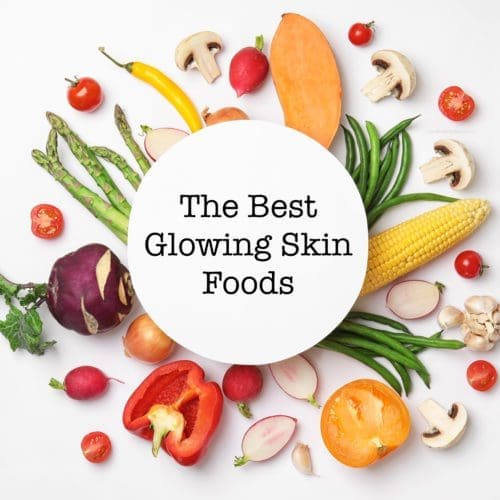

Glowing Skin Meal Plan (30 RECIPES + PLANNER)
Ingredients
Glowing Skin Breakfasts:
- Smoked Salmon Avocado Toast
- Blueberry Smoothie Vegetarian, Gluten-free
- Tomato Avocado Omelet Vegetarian, Gluten-free
- Almond Breakfast Smoothie Vegetarian, Gluten-free
- Feta Spinach Omelet Vegetarian, Gluten-free
Glowing Skin Lunches:
- Smoked Salmon Lunch Wraps
- Vegan Rice Bowls Vegan, Vegetarian, Gluten-free
- Mango Avocado Salad with Pomegranates Vegetarian, Gluten-free
- Strawberry Spinach Salad with Chicken Gluten-free
- Carrot Soup (2-3 servings!) Vegan, Vegetarian, Gluten-free
Glowing Skin Dinners:
- Avocado Pesto Pasta Vegan, Vegetarian, Gluten-free
- Cheese and Spinach Smothered Chicken in Crockpot Gluten-free
- Creamy Chicken Stew in Crockpot Gluten-free
- Green Shakshuka with Feta Vegetarian, Gluten-free
- Hasselback Caprese Chicken Recipe Gluten-free
- Grilled Teriyaki Salmon Gluten-free
- Chicken Parmesan Stuffed Tomatoes Gluten-free
- 15 Minute Cherry Tomato Pasta Recipe Vegan, Vegetarian, Gluten-free
- Healthy Shrimp Tacos Recipe Gluten-free
- Vegan Buddah Bowl Recipe Vegan, Vegetarian, Gluten-free
Glowing Skin Snacks:
- Orange Ginger Carrot Juice Recipe Vegan, Vegetarian, Gluten-free
- Healthy Yogurt Strawberry Popsicles Recipe Vegetarian, Gluten-free
- Cottage Cheese Meal Prep Snack Boxes Vegetarian, Gluten-free
- Blueberry Almond Cottage Cheese Protein Snack Vegetarian, Gluten-free
- Simple Fruit Salad Recipe Vegan, Vegetarian, Gluten-free
Glowing Skin Drinks:
- Blueberry Lemonade Recipe Vegan, Vegetarian, Gluten-free
- Green Tea Detox Drink Vegan, Vegetarian, Gluten-free
- Strawberry Lemonade Recipe Vegan, Vegetarian, Gluten-free
- Vanilla Orange Smoothie Recipe Vegetarian, Gluten-free
- 7 Strawberry Detox Water Recipes Vegan, Vegetarian, Gluten-free
Instructions
- Download the Glowing Skin Meal Planner.
- Pick 2 Breakfasts and add them to the meal planner, alternating them “every other day”.
- Pick 2 Lunches and add them to the meal planner, alternating them “every other day”.
- Pick 4-7 Dinners and add them to the nights you want to make them.
- Pick 2 Snacks and add them to the meal planner, alternating them “every other day”.
- Print the filled out Meal Planner (or alternatively print it first and hand write everything in).
Nutrition
FAQ – Glowing Skin Foods Q&A
The Best Fruits for Skin Glow:
1. Blueberries
2. Oranges
3. Strawberries
4. Cantaloupe
5. Pomegranates
6. Kiwi
7. Avocados
More glowing skin foods PLUS a glowing skin meal plan, 30 recipes, and more (all for free!) in this article.
5 (Low Calorie) Drinks to Make your Skin Glow:
1. Blueberry Lemonade Recipe
2. Green Tea Detox Drink
3. Strawberry Lemonade Recipe
4. Vanilla Orange Smoothie Recipe
5. Strawberry Detox Water Recipes
This article has 30 Skin Glow Recipes, a 7 Day Meal Planner and more!
The Best Foods for Healthy Skin:
1. Almonds
2. Honey
3. Salmon
3. Kiwi
4. Strawberries
5. Green Tea
Find more Foods for healthy glowing skin, plus 30 recipes, a healthy skin meal plan and more in this article!
Healthy foods, lots of water, and plenty of sleep will make your skin glow. Try this 7 day Glowing Skin Meal Plan… it comes with 30 recipes, a printable meal planner, and all the best foods for healthy, glowing skin!
1. Drink more water
2. Get more sleep
3. Eat foods that make your skin glow (22 glowing skin foods can be found in this article!)
Get your glow on with this 7 Day Glowing Skin Meal Plan, 30 recipes and more!
What to Read Next:
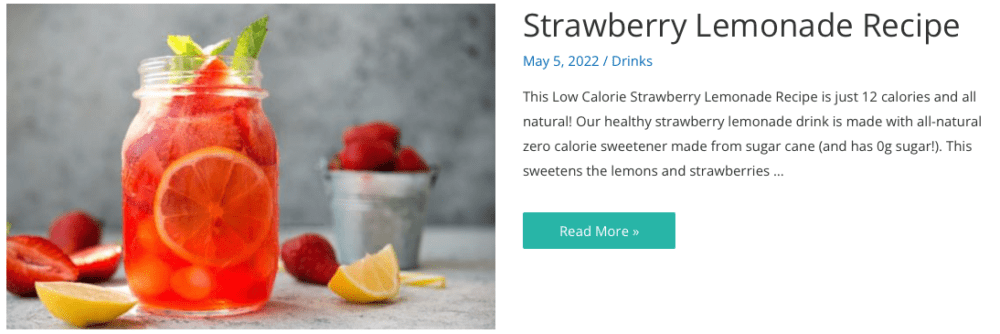

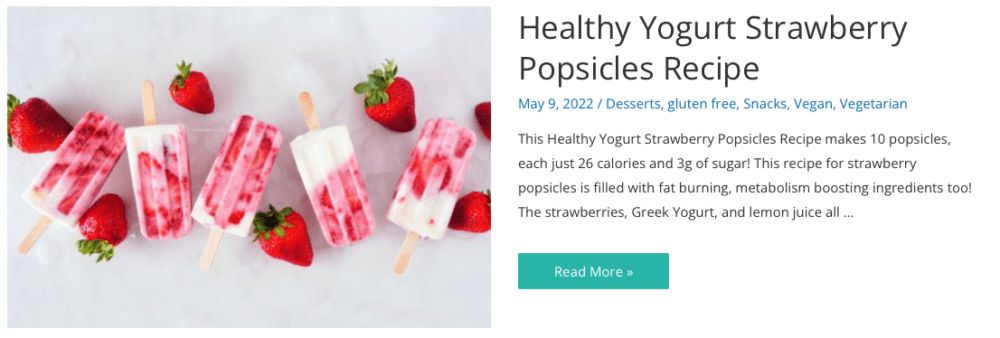

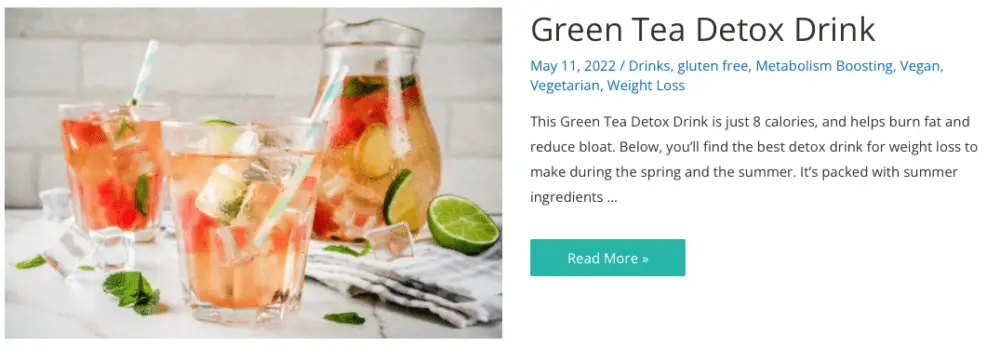

Lose Weight By Eating Cookbooks


Pin this Article to Pinterest:
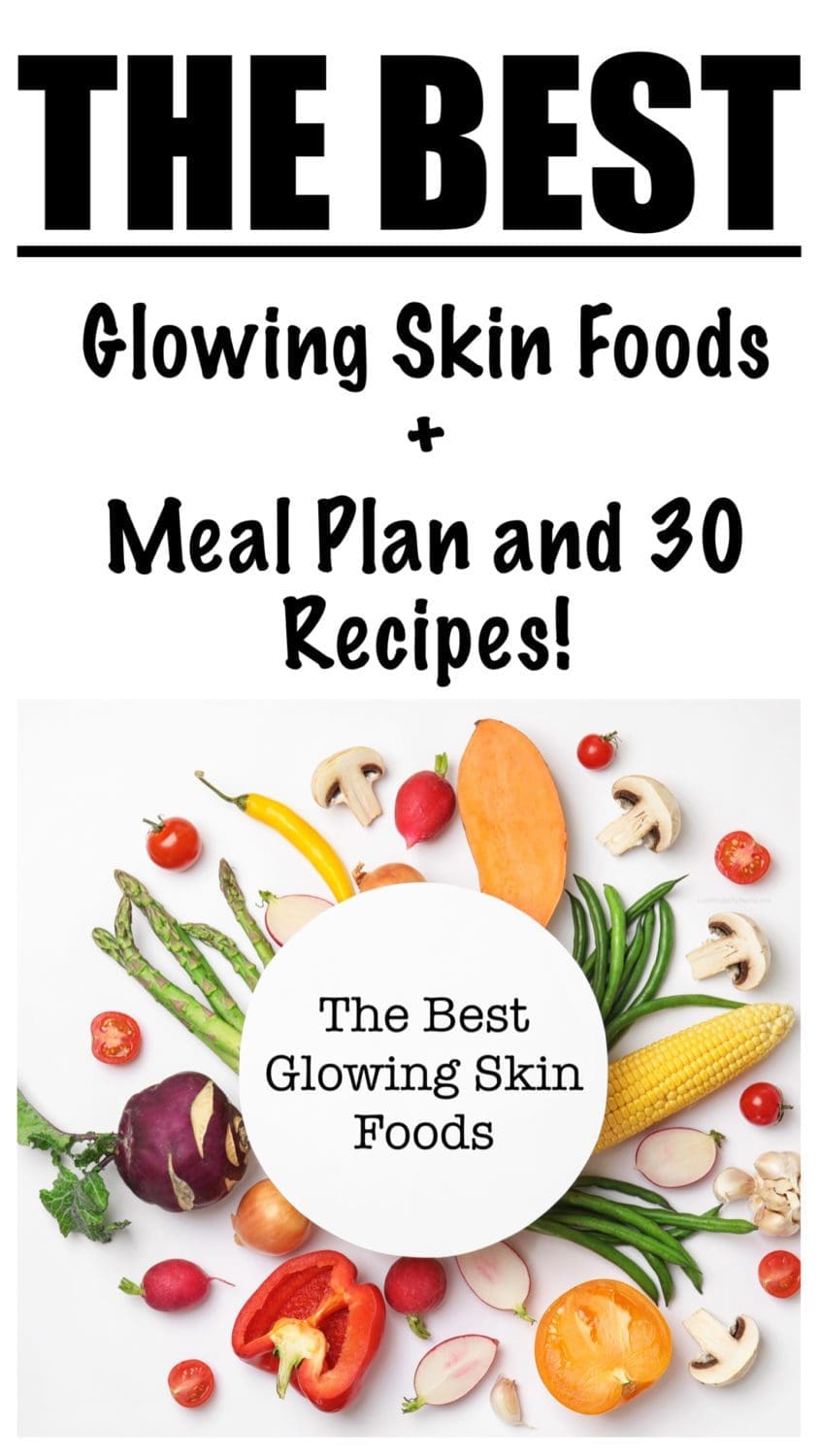

References:
https://www.ncbi.nlm.nih.gov/pmc/articles/PMC3583891/
https://www.jandonline.org/article/S2212-2672(21)01433-7/fulltext
https://www.ncbi.nlm.nih.gov/pmc/articles/PMC7146365/
